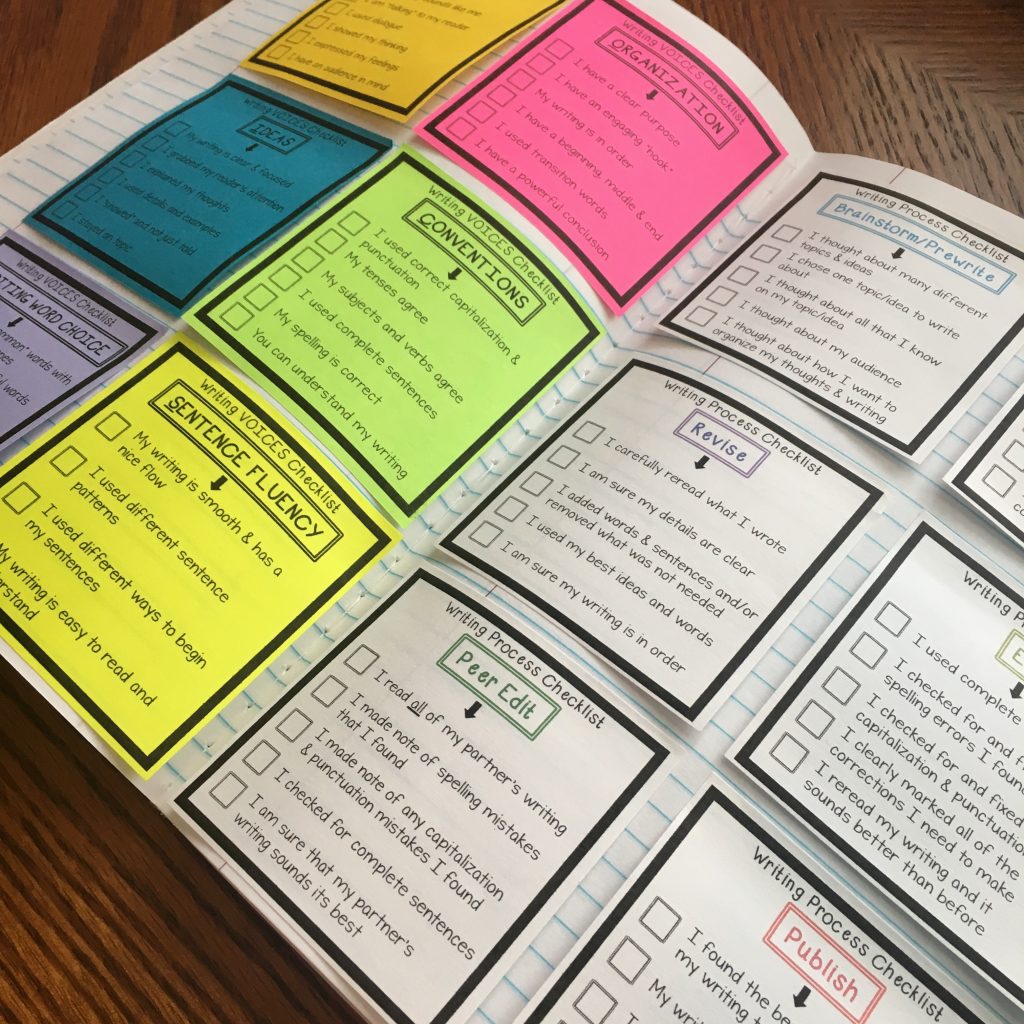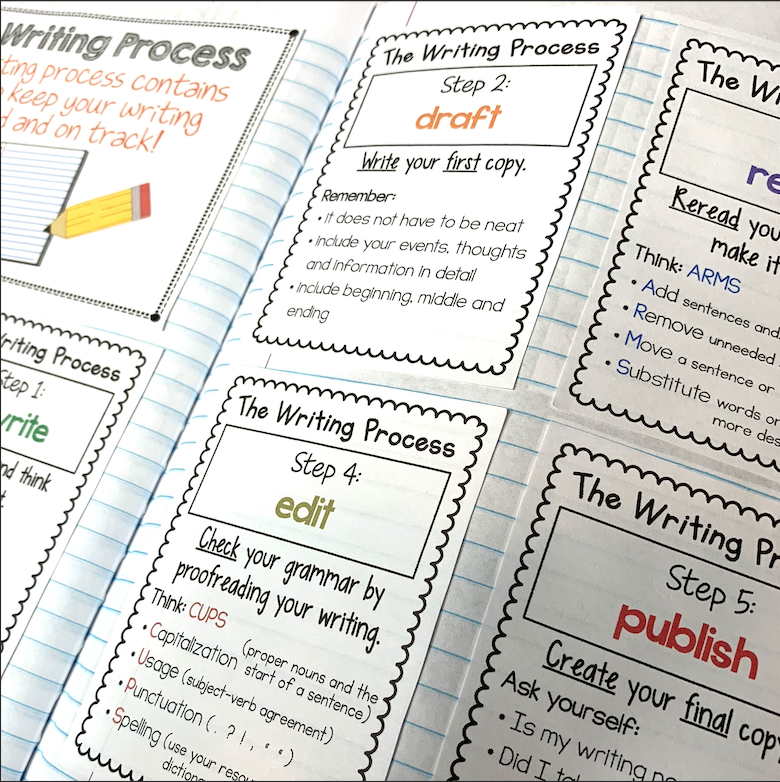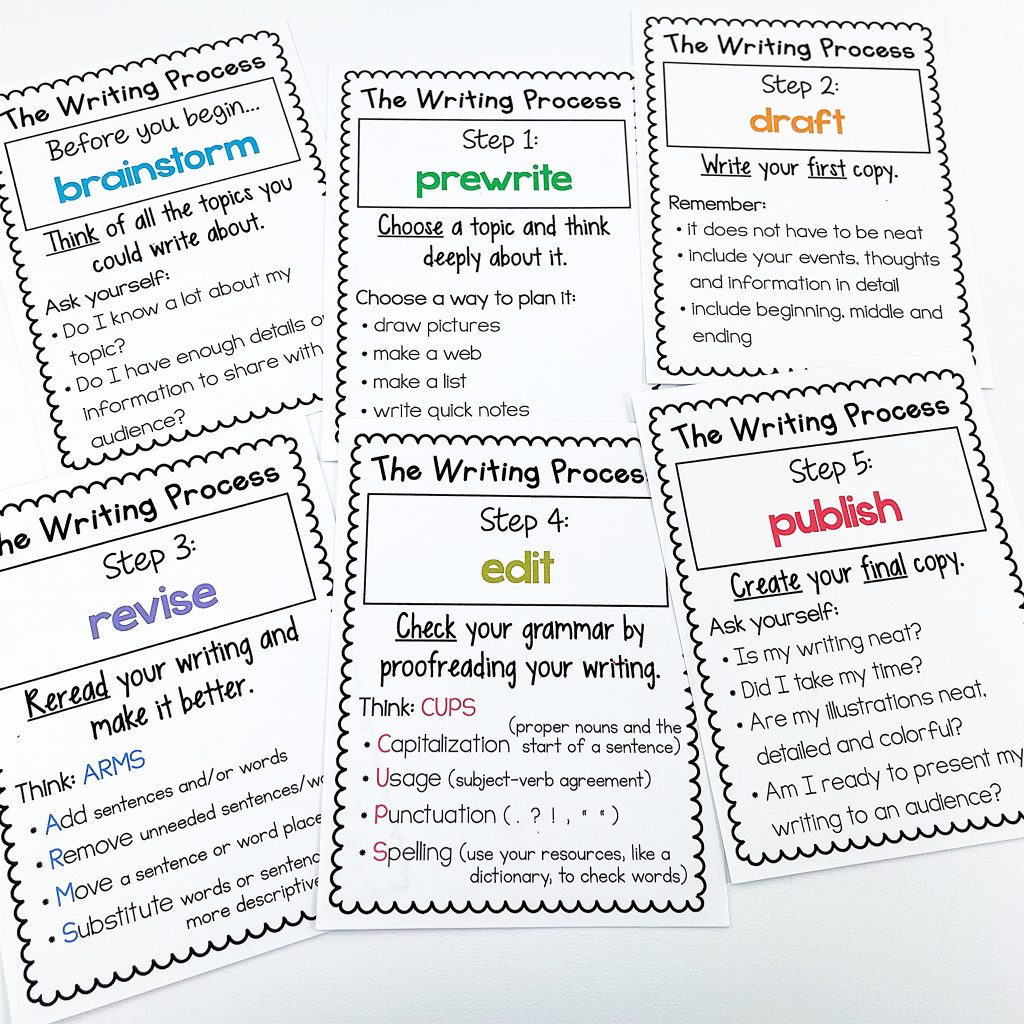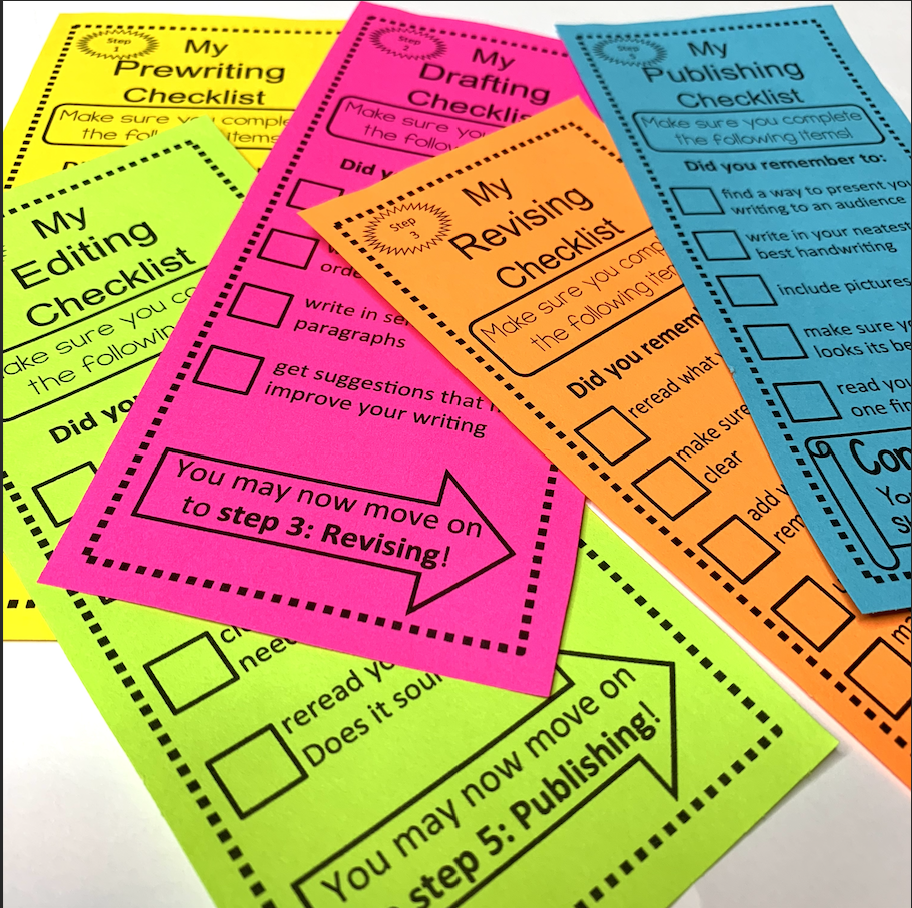
Understanding the Writing Process: Step-By-Step
As you all know, I’m very passionate about literacy…especially writing! It is said that writing is a journey, not a destination, which explains why it is called a writing process and takes time to complete effectively. Teaching writing as a step-by-step process is essential in helping students become proficient writers. In this blog post, we will break down the writing process into five key steps: brainstorming (prewriting), drafting, revising, editing, and publishing. By understanding each of these steps in the writing process, you can empower students to navigate language and become more confident in their writing.
There is no possible way that these steps can be taught with fidelity in just one class session. These steps are important. When thinking about writing our masterpieces, the best representation of our writing craft, we must give students the time and opportunity to focus on each part of the writing process individually, which is going to result in a clear, focused composition. So let’s get to each step in the writing process!
Step One: BRAINSTORMING (Prewriting)
During this first stage in the writing process, students should take the time to generate a list of possible ideas or reasons that can be developed into a story or informative piece of writing. It’s crucial to emphasize that this is a time for creativity and idea generation, not for constructing complete sentences or paragraphs.
To facilitate effective brainstorming, teachers can model various techniques, such as drawing a picture, creating an outline, making a flowchart, designing a web, sequencing events, or crafting a list. Different writing prompts or topics may require different brainstorming approaches, so it’s essential to guide students through this process to help them discover what works best for them.
Encourage students to take their time during brainstorming and not rush into making decisions on what to write about. Circulating the room and asking targeted questions can help stimulate their thinking and generate additional ideas. Brainstorming is a critical foundation for the writing process, and it’s REQUIRED to give students plenty of time to explore their thoughts.
Step Two: DRAFTING
Once ideas are generated during brainstorming, the next step in the writing process is drafting. In this stage, students create a rough copy of their writing, using the ideas from their brainstorming session. It is vital to stress that this is NOT the time for perfect sentences or polished introductions! This time is about getting the thoughts out of their brain and onto the paper.
Students should refer to their brainstorming web, outline, or list to guide their writing. The focus is on transferring these ideas onto the paper in a legible manner. At the end of this phase, drafts should be celebrated! Reassure your students that all revisions will come next but that their work thus far is fantastic!


Step Three: REVISING
Revising is the third step in the writing process. It involves refining and improving the content of the rough draft. To make the revision process manageable for our students, it is helpful to break it down into specific areas for them to focus on. One useful acronym for guiding students through this step in the writing process is ARMS. Let’s talk about what that means!
- A- Add: Encourage students to think about anything that they can add such as details, words, transitions, introductions, conclusions, or any sentence structures that could enhance their writing.
- R- Remove: Have students remove any repeated ideas or off-topic sentences to maintain clarity and focus.
- M- Move: Have students rearrange ideas, words, or sentences to improve the flow and organization of their writing.
- S- Substitute: This is FUN! Challenge students to replace confusing sentences or words with clearer and more engaging options! Use these thesaurus charts to help your students select juicer words and cut out the boring ones!
You can use colored pens or highlighters to make this FUN for kids. We want the revisions to stand out.
Step Four: EDITING
Editing is the stage where students carefully review their writing for errors. It is crucial to teach them to pay close attention to details and to scan their writing for mistakes. It is HARD to edit, and these errors do not naturally pop out to our students. To support your students with this skill, use the strategy called CUPS! Here is what it means:
- C- Capitalization: Correct capitalization errors by giving your students a chart with the main things to check for. For example, checking for “I”, first words in the sentence, days of the week/months, etc.
- U- Usage: Ensure that nouns and verbs agree and are correctly used.
- P- Punctuation: Examine both sentence-ending and within-sentence punctuation. Start simple with periods and exclamation marks, and move to question marks and other challenging punctuation.
- S-Spelling: Hold students accountable for spelling sight words and high-frequency words correctly. Encourage phonetic spelling for trickier words, and provide resources like word walls or dictionaries for support.
Peer editing can also be incorporated during this stage, allowing students to learn from each other’s mistakes by using the CUPS strategy to review a classmate’s work.
Step Five: PUBLISHING
The final step in the writing process is publishing. After working through brainstorming, drafting, revising, and editing, students are ready to create their final copy. THE COPY! In this stage, they should focus on making their writing the BEST it can be. They have worked so hard through each step, and this should be the easiest in their journey.
Provide students with a checklist to ensure that they have addressed all necessary elements, such as staying on topic, writing in complete sentences, and applying revisions and edits. Neat handwriting and special publishing paper can add a sense of pride to their product too.
Think about this as a HUGE celebration of AMAZING writing. Consider organizing a publishing party as a celebration of their hard work. They. Are. Authors! This event allows students to share their writing with peers and even read it aloud if they wish. It’s an opportunity for students to showcase their growth as writers and celebrate their accomplishments. An added bonus- provide little drinks and treats to level up the occasion.
Teaching the Writing Process Matters
Teaching writing as a step-by-step process is a MUST for helping students become proficient and confident writers. It takes time, but I promise you, the breakdown of the steps really does help students work through their writing in a manageable and digestible way. If you have not put focus on this, let this be a goal for THIS school year. Remember, IT IS a journey. Let’s make it an impactful one that is to stay with them for years to come.
If you are excited about teaching the writing process and are in need of some resources for it, check them out HERE! This can simply help you get started, and you can watch your students thrive and take off in return!


Share it:
- Read more about: Teacher Tips, Writing
You might also like...

Hey, I'm Megan!
I am a literacy specialist and curriculum designer who loves sharing tips and ideas to help students thrive in literacy! It brings me joy to await those a-ha moments and to see light bulbs turn on!
I have a huge passion for reading and writing and love to co-mingle the two any chance I get! You can expect to learn new strategies and ways to keep your students engaged during your literacy block! I am so glad you’re here!





